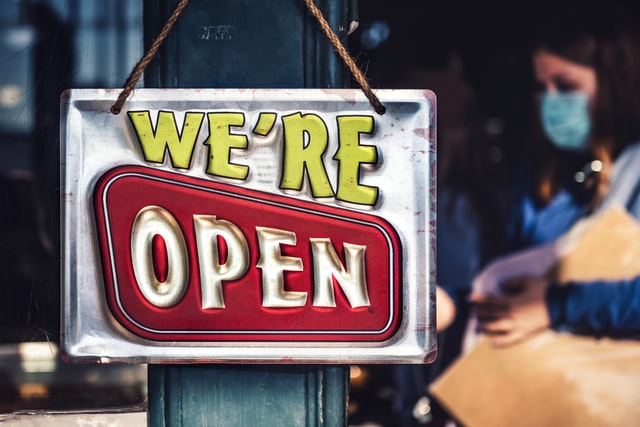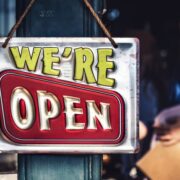
WHEN California Governor Gavin Newsom announced on Monday, Jan. 25 that the state would be lifting the stay-at-home order imposed in December, Californians everywhere were at best, confused and at worst, livid.
The stay-at-home order was implemented in early December as a response to the critical low hospital capacity and the unprecedented surge in cases and deaths associated with COVID-19.
But based on projections that the state released this week estimating future hospital ICU capacity throughout the state, California leaders decided to lift the stay-at-home order, allowing certain businesses and restaurants to reopen with more lax regulations.
Southern California — one of the hardest-hit regions in, not only the state, but the country — accounts for half the state and still suffers from a 0% ICU capacity, according to the latest state data. But according to the projections, the state predicts that in the next four weeks ICU capacity in the region will increase to 33%.
“We’re seeing a flattening of the curve — everything that should be up is up, everything that should be down is down — case rates, positivity rates, hospitalizations, ICUs,” Newsom said in a virtual news conference this week.
The lifting of the stay-at-home order means that the state has resorted back to the color-coded tier system, which imposes certain restrictions based on case and positivity rates among counties. This allows restaurants to, once again, accommodate outdoor dining and that places of worship can resume outdoor services. Additionally, hair and nail salons and other retail businesses may now open for in-store services with capacity limits.
The stay-at-home order also imposed a curfew to limit the spread of the virus from 10 p.m. to 5 a.m. which was also lifted on Monday.
In an interview on NPR on Tuesday, Jan. 26, California Health and Human Services Secretary Dr. Mark Ghaly reasoned that as the state observes a slight decrease in cases and hospitalizations (likely due to the stay-at-home order more or less working as intended), the state felt that there was room for the public to resume out-of-home activities, albeit with the same social distancing and face mask mandates.
“We know that events that happen outdoors, preferably with a mask on as much of the time as possible, are among the lower-risk events,” Ghaly said. “And we prohibited it because any movement, any mixing outside of your home, was concerning when we had such tremendously high case rates. But as they’ve come down, of course, we must allow and really hope that people use their good judgment.”
But the news of the state lifting the stay-at-home order wasn’t warmly received by many Californians who are struggling to mitigate the spread of the coronavirus. The latest surge began back in mid-October and since then, the state has recorded 2 million more cases and a spike in hospitalizations.
In Los Angeles County, there have been a total of 1.1 million cases and more than 16,000 deaths since the beginning of the pandemic.
“It’s become a cycle at this point; we go one step forward, then three steps back. It’s exhausting and infuriating,” Myla Ramirez, a Filipina American ICU nurse at Hollywood Presbyterian Medical Center, told the Asian Journal in a recent phone interview.
Ramirez, 29, became a registered nurse last February and has seen firsthand how the COVID-19 has beleaguered her workplace as well as the other hospitals in the area. Just yards away sits both Children’s Hospital Los Angeles and the Kaiser Permanente Los Angeles Medical Center, the latter of which employs two family members.
“I belong to a family of nurses, doctors and other medical practitioners and all we do when we talk to each other is about how bad our situations are in each of our hospitals, and those conversations have just been getting progressively worse and more tragic,” Ramirez said.
“Just because numbers have gone down slightly and just because you have a piece of paper that predicts that capacity will increase doesn’t mean that it’s a good idea to let our guard down,” Ramirez said, pointing to initial re-opening of the state in May when the state experienced a surge shortly after lifting the first stay-at-home order.
Regarding vaccinations — of which Ramirez received both doses earlier this month — Ramirez noted that they’re not an excuse for people, especially front-liners who are at the top of the priority list for vaccines, to ease public behavior.
The easing of pandemic restrictions, despite what ICU projections predict, comes at a time when LA County, in particular, is experiencing astronomical surges in positive COVID-19 cases which continues to stress local health care clinics and the funeral industry, which is facing a tragic backlog of thousands of corpses.
Cecilia Li, a Filipina American caregiver in the San Gabriel Valley, told the Asian Journal that the reopenings were “ill-advised” and could lead to another surge in the near future.
Mirroring Ramirez’s thoughts, Li believes that in order for there to be significant improvements in the state the stay-at-home order should be extended.
“You think it’s safe to go outside, and you think it’s comfortable to go shopping and go to restaurants, but it’s not because you can’t expect everybody you run into to be as careful as you,” Li said.
Li, who was hired directly from her employer (an 83-year-old Chinese American woman), had contracted COVID-19 in June shortly after the first stay-at-home order was lifted.
She and a colleague had gone to a restaurant in Santa Monica and walked along the Third Street Promenade one weekend. The following week, she tested positive for coronavirus and quarantined for two weeks before she returned to her patient.
Li was hospitalized for a few days and fully recovered before going back to work, but she expressed “regret” for what she calls “a stupid decision” that could have potentially “infected [her] client and others.”
“If you’re thinking about going out, maybe to an outdoor seating area of a restaurant or even to an open mall, think again. It’s not safe because even if you take your mask off for a little bit, you’re still exposing yourself,” Li said.
In Orange County, COVID-19 has plateaued some with a cumulative total of 229,757 cases and 2,975 deaths across the county. As of Friday, Jan. 29, 1,521 people are currently hospitalized due to the coronavirus, a small decrease from the 1,703 that was reported on Monday, Jan 25.
But with the relaxing of stay-at-home orders — and the fact that local pandemic measures are far less restrictive in Orange County than those of LA County — the county may experience another surge in the coming weeks. And the frustratingly unhurried rollout of the vaccines doesn’t help either.
“It’s imperative that we get more people vaccinated so we don’t have to go through this back and forth over when we should close and when we should open again. Apart from it being confusing and sending mixed messages, it’s a lot of work for us in the health care sphere to adjust to these changes, which at this point feel really erratic,” Nina Alvarez, a registered nurse at Hoag Hospital in Newport Beach, told the Asian Journal.
Alvarez said that she and her colleagues anticipate another spike in cases, hospitalizations and deaths in the coming weeks as more and more people began going out to restaurants and other public areas.
“We’re really working to the bone here and it’s made us feel really emotionally detached and quite gloomy about the future,” Alvarez lamented. “These politicians will celebrate the decrease in hospitalizations and number of deaths, but it’s not something to celebrate at all. One death from this virus is one too many.”
Regarding the re-opening of restaurant outdoor services, she expressed dismay.
“There haven’t been many days in the last few months where we haven’t had at least one death from this virus, but those at the top of the tree don’t see that as horrifying,” Alvarez said. “But God forbid, people won’t be allowed to eat on a restaurant patio.”






